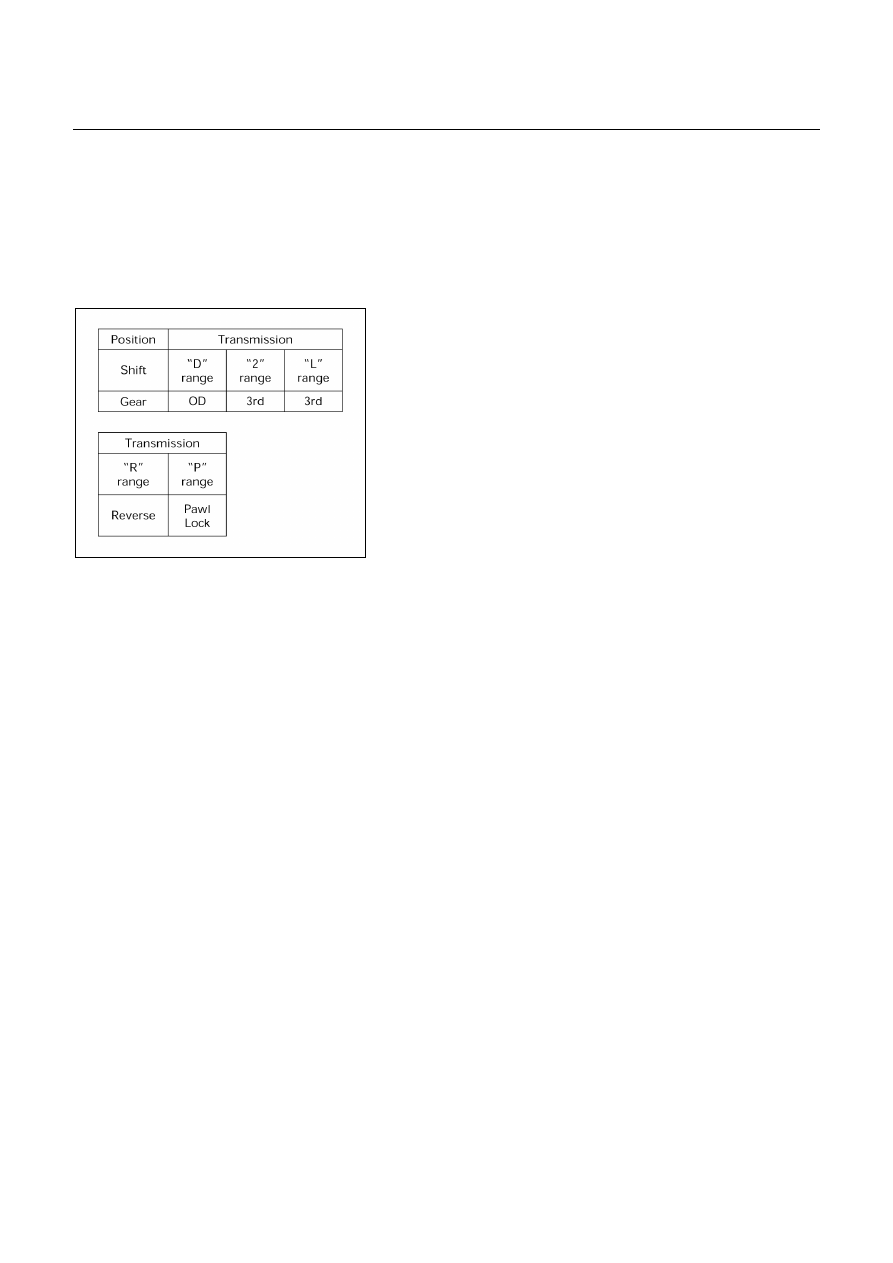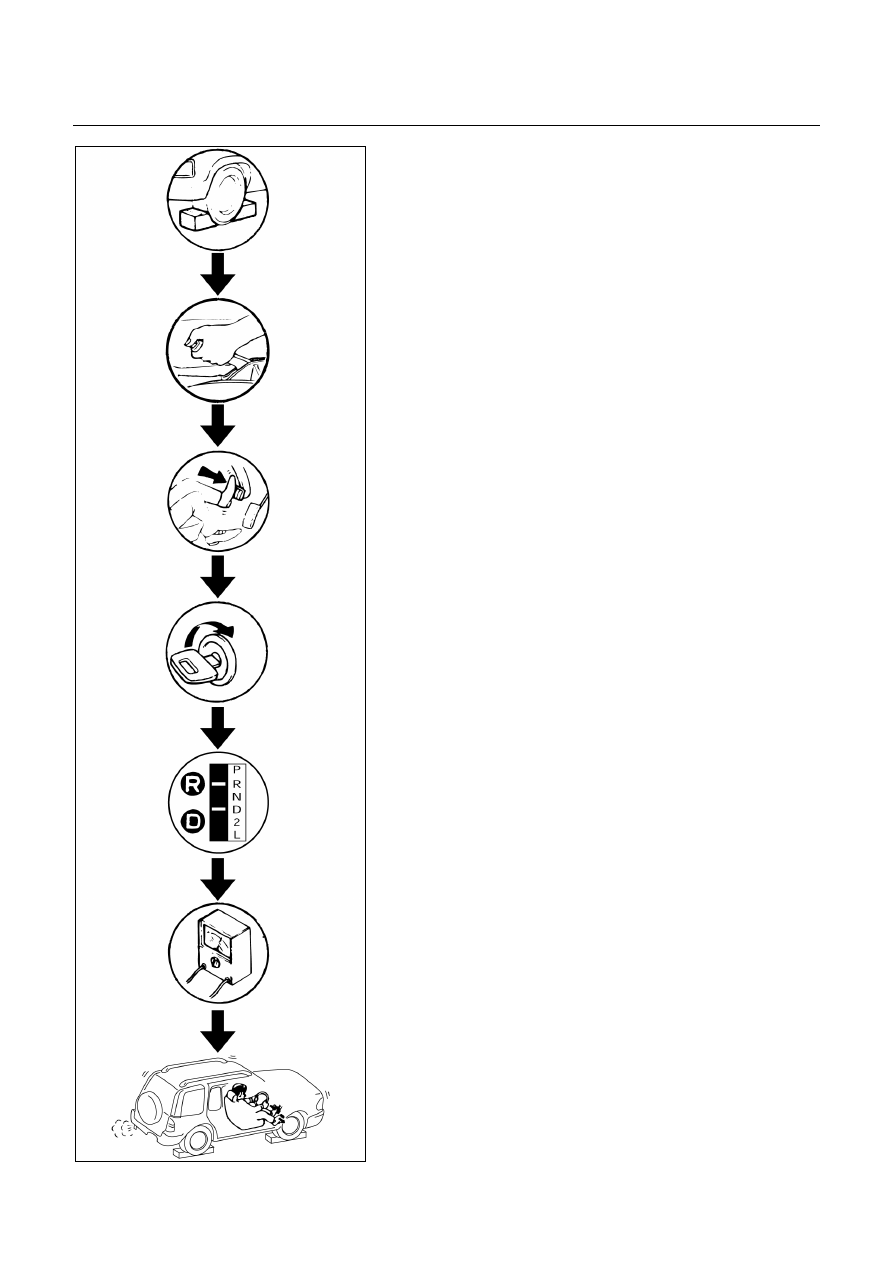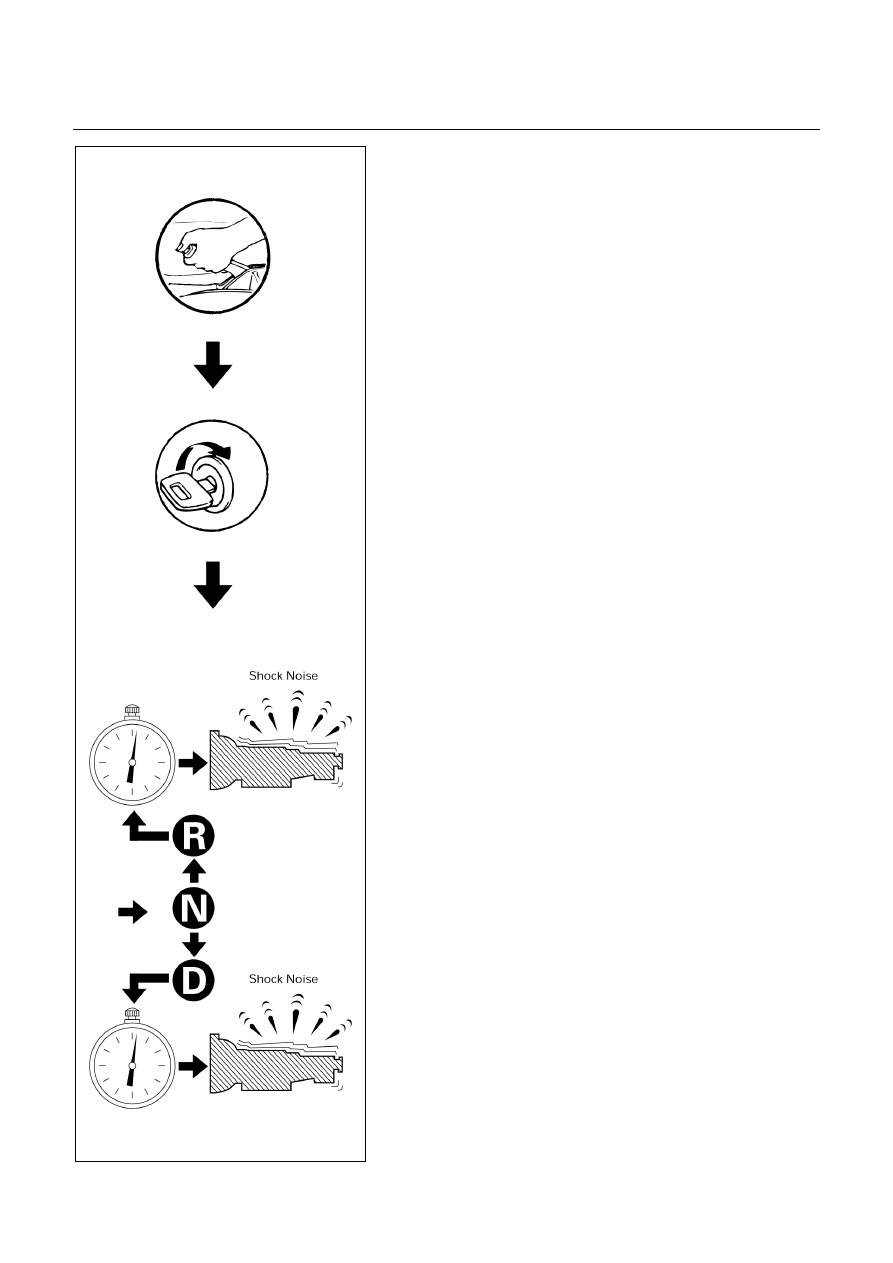Isuzu D-Max / Isuzu Rodeo (TFR/TFS). Manual — part 377

7A-56 AUTOMATIC TRANSMISSION (AW30-40LE)
MANUAL SHIFTING TEST
NOTE:
With this test, it can be determined whether the trouble
lies within the electrical circuit or is a mechanical
problem in the transmission.
1. Disconnect TCM connector
With the engine OFF, disconnect the TCM connector.
F07RY00024
2. Inspect manual driving operation
Check that the shift and gear positions correspond with
the table.
If the “L”, “2” and “D” range gear positions are difficult to
distinguish, do perform the following road test.
While driving, shift through the “L”, “2” and “D” renges.
Check that the gear change corresponds to the gear
position.
If any abnormality is found in the above test, do perform
the stall, time lag or gear change tests.
3. Connect TCM connector
With the engine off, connect the TCM connector.

AUTOMATIC TRANSMISSION (AW30-40LE) 7A-57
F07RY00002
STALL TEST
The object of this test is to check the overall performance
of the transmission and engine by measuring the maximum
engine speeds at the “D” and “R” ranges.
NOTE:
(1) Perform the test at normal operation fluid
temperature (50 – 80°
°
°
°C or 122-176°
°
°
°F).
(2) Do not continuously run this test longer than 5
seconds.
MEASURE STALL SPEED
1. Chock the four wheels.
2. Mount an engine tachometer.
3. Fully apply the parking brake.
4. Step down strongly on the brake pedal with your left
foot.
5. Start the engine.
6. Shift into the “D” range. Step all the way down on the
accelerator pedal with your right foot. Quickly read the
highest engine rpm.
Stall speed: 2400±
±
±
±150 rpm
7. Perform the same test in the “R” range.
EVALUATION
1. If the engine speed is the same for both ranges but
lower than the specified value:
・Engine output is insufficient.
・Stator one-way clutch is not operating properly.
NOTE:
If more than 600 rpm below the specified value, the
torque converter could be faulty.
2. If the stall speed is “D” range is higher than specified:
・Line pressure too low
・Forward clutch slipping
・No.2 one-way clutch not operating properly
・OD one-way clutch not operating properly
3. If the stall speed in “R” range is higher than specified:
・Line pressure too low
・Direct clutch slipping
・No.3 brake slipping
4. If the stall speed in the “R” and “D” ranges are higher
than specified:
・Line pressure too low
・Improper fluid level

7A-58 AUTOMATIC TRANSMISSION (AW30-40LE)
F07RY00003
TIME LAG TEST
If the shift lever is shifted while the engine is idling, there
will be a certain time elapse or lag before the shock can be
felt. This is used for checking the condition of the forward
clutch, direct clutch, No.3 brake, and No.2 one-way clutch.
NOTE:
(1) Perform the test at normal operation fluid
temperature (50 – 80°
°
°
°C or 122 – 176°
°
°
°F)
(2) Be sure to allow one minute interval between
tests.
(3) Make three measurements and take the average
value.
MEASURE TIME LAG
1. Fully apply the parking brake.
2. Start the engine.
Check idling speed (A/C OFF)
“N” range: 855 – 905 rpm (UBS)
: 825 – 875 rpm (TF)
3. Shift the shift lever from “N” to “D” range. Using a stop
watch, measure the time it takes from sihfting the lever
until the shock is felt.
Time lag: Less than 0.7 seconds
4. In same manner, measure the time lag for “N” → “R”.
Time lag: Less than 1.2 seconds
EVALUATION
1. If “N” → “D” time lag is longer than specified:
・Line pressure too low
・Forward clutch malfunction
・No.2 one-way clutch not operating properly
2. If “N” → “R” time lag is longer than specified:
・Line pressure too low
・Direct clutch malfunction
・No.3 brake malfunction
3. If both time lag is longer than specified:
・Line pressure too low

AUTOMATIC TRANSMISSION (AW30-40LE) 7A-59
HYDRAULIC TEST
PREPARATION
1. Warm up the transmission fluid.
2. Remove the transmission case test plug and mount the
hydraulic pressure gauge.
Oil pressure gauge: 5-8840-0093-0
NOTE:
Perform the test at normal operation fluid temperature
(50 – 80°
°
°
°C or 122 – 176°
°
°
°F).
MEASURE LINE PRESSURE
1. Fully apply the parking brake and chock the four
wheels.
2. Start the engine and check idling rpm.
3. Shift into “D” range, step down strongly on the brake
pedal with your left foot and, while manipulating the
accelerator pedal with the right foot, measure the line
pressures at the engine speeds specified in the table.
4. In the same manner, perform the test in “R” range.
Line pressure kPa (kg/cm
2
/psi)
Engine
speed
“D” range
“R” range
Idling
422 – 481
(4.3 – 4.9/
61 – 70)
510 – 608
(5.2 – 6.2/
74 – 88)
Stall
1117 – 1362
(11.4 – 13.9/
162 – 198)
1373 – 1715
(14 – 17.5/
199 – 249)
F07RY00004
5. If the measured pressures are not up to specified
values, recheck the throttle cable adjustment and
perform a retest.
EVALUATION
1. If the measured values at all ranges are higher than
specified:
・Throttle cable out of adjustment
・Throttle valve defective
・Primary regulator valve defective
2. If the measured values at all ranges are lower than
specified:
・Throttle cable out of adjustment
・Throttle valve defective
・Primary regulator valve defective
・Oil pump defective
3. If pressure is low in “D” range only:
・“D” range circuit fluid leakage

Нет комментариевНе стесняйтесь поделиться с нами вашим ценным мнением.
Текст